- posted: Jul. 26, 2022
You’ve probably heard someone say they are experiencing sciatica or sciatic pain, and it’s very likely you’ve even experienced it yourself. This type of pain is very common, with about 40% of the population complaining of this problem at some point in their lives.
However, people commonly confuse sciatic pain with back pain, and the truth is that these two types of pain can be related, but they are not the same thing. While sciatic pain typically does include back pain, not all back pain is associated with the sciatic nerve. There are five main nerve roots that make up the sciatic nerve, which is actually the longest and thickest nerve in the body. The nerves that make up the sciatic nerve come from the lumbar spine and the sacrum. From there, the nerves branch out to create the left and right sciatic nerves, moving down through the hips, buttocks, legs and below the knee, and then connecting to other nerves in the feet and toes.
Sciatic pain can happen anywhere along the nerve due to any kind of irritation, inflammation or compression. That pain in the lower extremities can also reach the groin/anterior pelvis. This is how sciatica mainly differs from back pain; you can experience localized back pain that stays in one spot, anyone in the back, without radiating or traveling.
With sciatica, the pain usually starts in the lower back and travels down to the legs, and sometimes even all the way down to the feet. Aside from pain, other common symptoms of sciatic pain include numbness or weakness in those areas of the body and pain that increases with movement.
There are several different reasons for why someone may be experiencing sciatic pain, including medical conditions such as a herniated disk, degenerative disk disease, osteoarthritis or spinal stenosis, injury to the lumbar spine or sciatic nerve itself, or piriformis syndrome. The sciatic nerve runs through the piriformis muscle, which is the muscle in the buttocks that works to rotate the femur when your hip extends, and abduct the femur when the hip bends. Piriformis syndrome occurs when that muscle becomes too tight, causing excess pressure on the nerve which leads to irritation.
Sciatic pain can range from moderate to extreme, so treatment may depend on the level of intensity you are feeling. Sometimes simple, gentle stretching and over-the-counter pain medication can work, while other times it’s necessary to see a healthcare provider. Chiropractic care, acupuncture, and massage therapy are all great options to help with sciatic pain. These are also great remedies for back pain in general, even if it is not associated with the sciatic nerve.
If sciatica is something you have been suffering from, we suggest checking out this blog post with ideas for how to alleviate sciatic pain, as well as this video with tips for foam rolling and stretching to fix sciatic nerve pain.
You should not need to live with the burden of sciatic pain — and you don’t have to. Schedule an appointment for a consultation at Dr. Gena Chiropractic, your favorite family chiropractors in Plantation, to learn how chiropractic care, supplements with at-home stretching and foam rolling, can help alleviate the discomfort you’ve been feeling. Remember, your health is in your hands; our hands are here to help.
Locations
7119 W Broward Blvd
Plantation, FL 33317, US
Office Hours
10:00 am - 1:00 pm
3:00 pm - 6:00 pm
8:00 am - 11:00 am
10:00 am - 1:00 pm
3:00 pm - 7:00 pm
9:00 am - 1:00 pm
3:00 pm - 6:00 pm
Closed
9:00 am - 11:00 am
Closed

